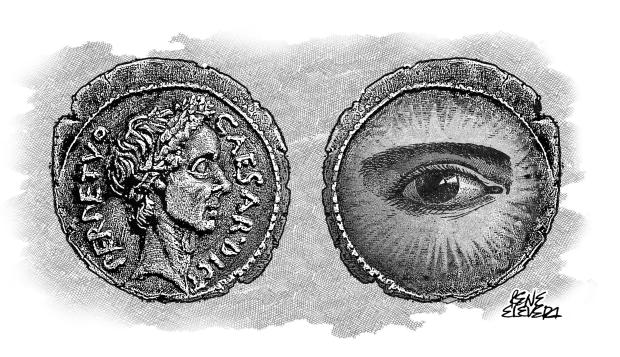When the wife and I visited St. Peter’s, we had photographs of ourselves taken all over the place, including at the steps of the basilica. We asked a companion, who obliged us by handling our phone camera, to include a nearby Swiss guard standing erect with his halberd.
I later realized, after brushing up on my history, that on May 6, 1527, not far from where we stood, a rogue division of the troops of Charles V, the Holy Roman Emperor, decimated almost the whole Swiss Guard force during the Sack of Rome. Of a total of 189 guards, 147 died defending Pope Clement VII, and only 40 of them, who escorted the pope through an escape route, avoided death.
They say that this event occasioned Peter Paul Rubens’ oil painting, “The Tribute Money,” which now hangs in the Fine Arts Museums of San Francisco.
The painting has to do with an incident Matthew writes about in his Gospel, when the Pharisees, wanting to entrap Jesus, sent their disciples to ask him a trick question. They said, “Teacher, we know that you are a truthful man and that you teach the way of God in accordance with the truth. And you are not concerned with anyone’s opinion, for you do not regard a person’s status. Tell us, then, what is your opinion: Is it lawful to pay the census tax to Caesar or not?”
Jesus, who sensed an ill motive behind the question, replied, “Why are you testing me, you hypocrites? Show me the coin that pays the census tax.”
When they handed him the Roman coin, he asked them, “Whose image is this and whose inscription?” They replied, “Caesar’s.” Jesus then declared, “Then repay to Caesar what belongs to Caesar and to God what belongs to God.”
In the painting, we see a group of eight men before Jesus, one of them holding out a coin to him. Rubens, employing his skills with movement and color, imparts their malice to us by putting a malevolent glint to their eyes, and Jesus’ authority in the way he raises up his left hand and points a finger towards heaven.
The Sack of Rome was just one more incident in the political conflicts in which the papacy found itself embroiled, having acquired temporal powers through the vagaries of history — which powers it eventually discarded in 1929 with the creation of the Vatican state.
Known for his Counter-Reformation work, Rubens might have wanted to underscore what Jesus told the Pharisees’ disciples – to give to Caesar what belongs to Caesar and to God what belongs to God – and to focus on the spiritual, rather than the secular nature of the Church.
Giving to Caesar what belongs to Caesar has become a widely used summary of the relationship between Christianity and politics. It is the other side of the coin, the obverse of the statement Jesus gave to Pontius Pilate at his trial: “My kingdom is not of this world.”
Every year, when the Taxman cometh, by way of lightening the burden, I recall what Jesus said to the disciples of the Pharisees, which urges respect for, and the payment of taxes to, state authority.
Obvious though it seems, what exactly does Jesus’ statement mean? Of the many spins given to the saying, I like Leo Tolstoy’s most of all – “In the first place, there is no mention there of obedience; in the second place, if Christ recognized the obligatoriness of paying tribute, and so of obedience, He would have said directly, ‘Yes, it should be paid;’ but He says, ‘Give to Caesar what is his, that is, the money, and give your life to God.’”
